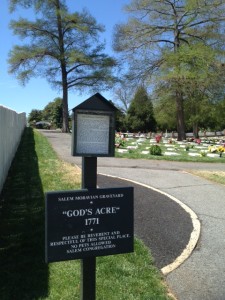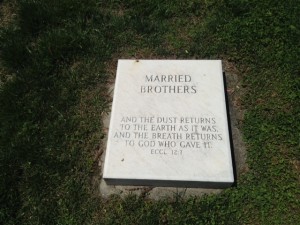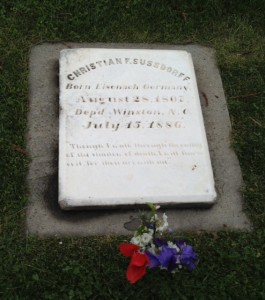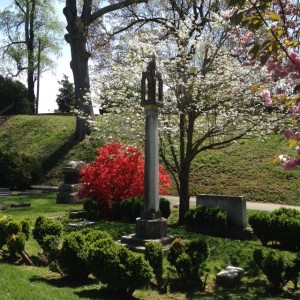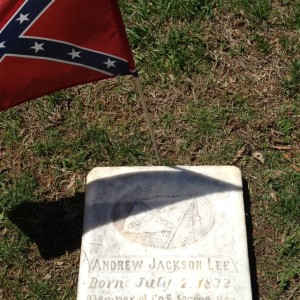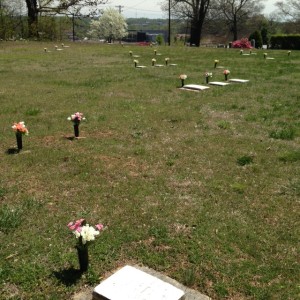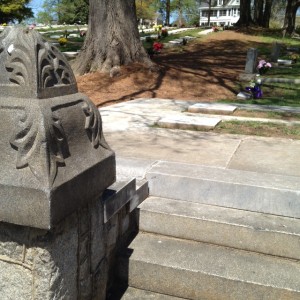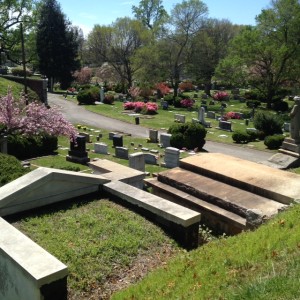An Easter Walk Through God’s Acre & Salem Cemetery
It’s been three years since I launched Barbara A. Campagna/Architecture + Planning, PLLC and while many things have changed, my goal to work on “greening what’s already here” continues to be met, often in places I never expected. Many people are finding new ways to integrate historic preservation and green building practices, which makes my new venture a delightful and intellectually inspiring one. This is blog two of my anniversary week.
Each Easter my fella and I participate in the Moravian Easter celebration of Easter, although neither of us is Moravian. Living within a historic and living Moravian town, Old Salem, is a fascinating experience. Of the European Christian religions that found homes in America, I find this one, one of the most egalitarian and open. Although the Moravian religion did have its own internal and external battles with the practice of slavery, it was a community that shared and cared fairly among its men and women much earlier than most. The town of Salem was a religious-based community and government from its founding in 1766 until 1849 when it became secular. The Home Moravian Church at Salem Square remains the headquarters of the American Moravian Church.
In keeping with the tradition, Easter begins in the wee hours of the morning when the Moravian bands wander the streets of Winston-Salem, playing outside residents’ homes to ensure they don’t sleep through sunrise service. This year they gathered at our corner at 2 am. Easter Sunrise Service begins in the Town Square where the minister starts the service from the entry porch of Home Moravian Church. Tens of thousands gather in the square, many of whom are not Moravian. After about a half hour of the service, everyone walks down to God’s Acre, accompanied by the bands. The service continues and finishes within the Salem Moravian Graveyard known as God’s Acre.
Social Justice, Class and Our Cemeteries
I find God’s Acre one of the most serene and beautiful cultural landscapes I have ever experienced. Unlike the picturesque Catholic and Protestant cemeteries that I grew up with, where every family tries to outdo the next with the design and scale of their tombstones, the focus of God’s Acre is to be egalitarian. The cemetery is divided into squares and congregants are buried chronologically according to “Single Brothers,” “Single Sisters,” “Married Brothers,” “Married Sisters,” children, also separated by squares intended for full caskets or urns. Each burial spot uses the same size marble stone indicating that everyone is equal under God. Families are not buried together.
I share John’s very special tradition each Holy Saturday. We gather flowers from his property and make five vases, which we place on five very special graves. His house was built by Christian and Louisa Sussdorf who each receive one of the vases. Then we place flowers on the graves of Samuel and Christina Shultz, the owners of the house that he studied for his master’s thesis and the reason he came and settled in Old Salem. Finally, we place flowers on the grave of Frank Morton in the neighboring Protestant Salem Cemetery – Frank was one of the founder’s of Old Salem Museums and Gardens and one of John’s mentors. I appreciate the simplicity of the graveyard’s plan, both architecturally and socially, and appreciate the fact that 300 hundred years later this burial tradition remains. This lovely annual ceremony of John’s is one that appreciates the beauty and fairness of the graveyard’s design.
Salem Cemetery
We spent Easter afternoon roaming around both God’s Acre and the neighboring Salem Cemetery. Salem Cemetery is the type of cemetery with which I was more familiar, grand monuments and mausoleums marking family plots, flowering trees and meandering walkways. What we also came across which is not found in my family’s northern cemeteries is a Confederate plot and an African-American only site. It was ironic that the African-American site was a stone’s throw from the Confederate plot. Here, the cemetery’s distinguishing characteristic is one of segregation – segregation by class and segregation by race. I guess by using the word “segregation” I imply that this cemetery is less fair and just than God’s Acre. What I do love about these typical picturesque cemeteries is that at every corner you turn you find something new and different, and here the African-American area or the Confederate area each tells an important if not a positive story about our history. Certainly some religions and some communities were ahead of others with their level of respect for all humanity and what we find in Winston-Salem is that these differing approaches have grown and expanded next to one another so that it becomes less obvious over the decades what the differences were. Happy Earth Day! (See more photographs below)
And if you’d like to “subscribe” or follow my blog, True Green Cities, please sign up through the “Subscribe” button at the bottom left of this page. You’ll receive a daily recap when new blogs are posted. Or Sign up for the Feed.

